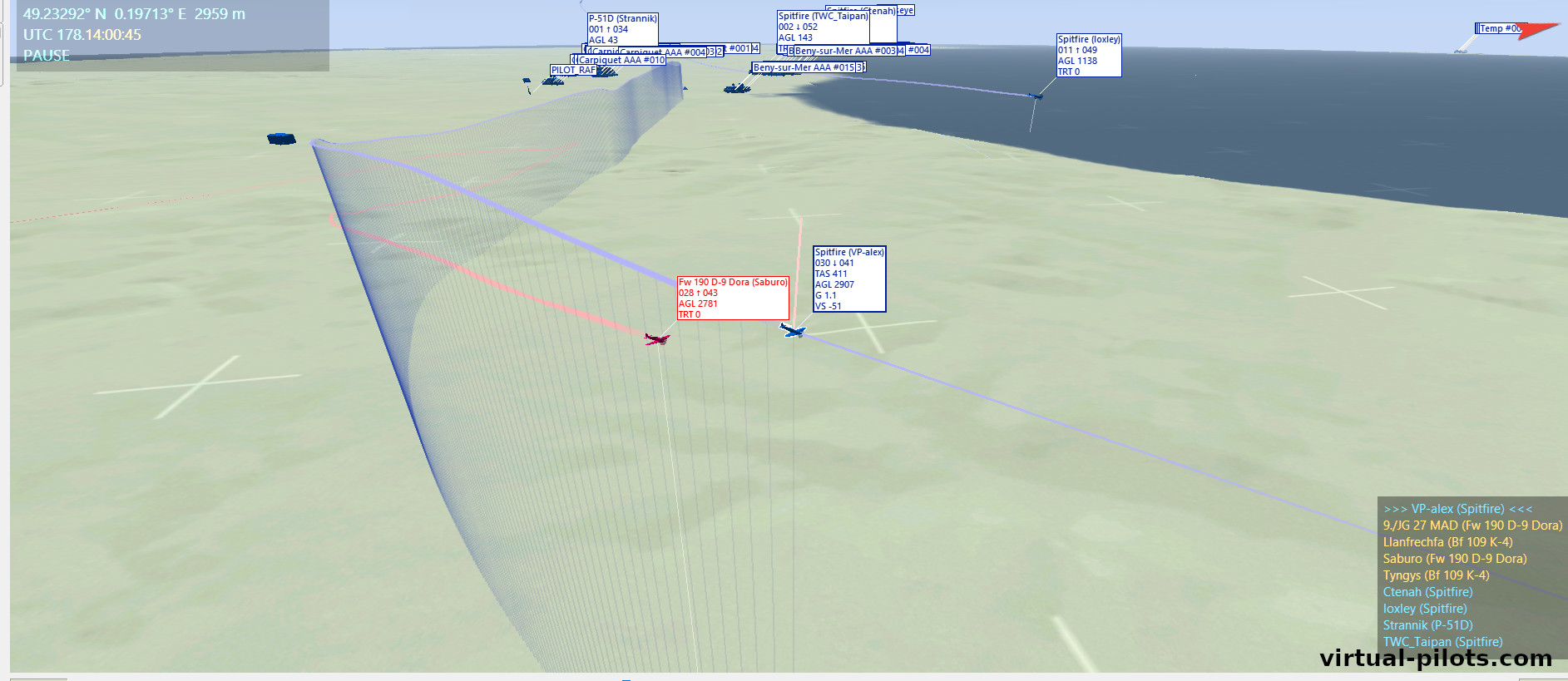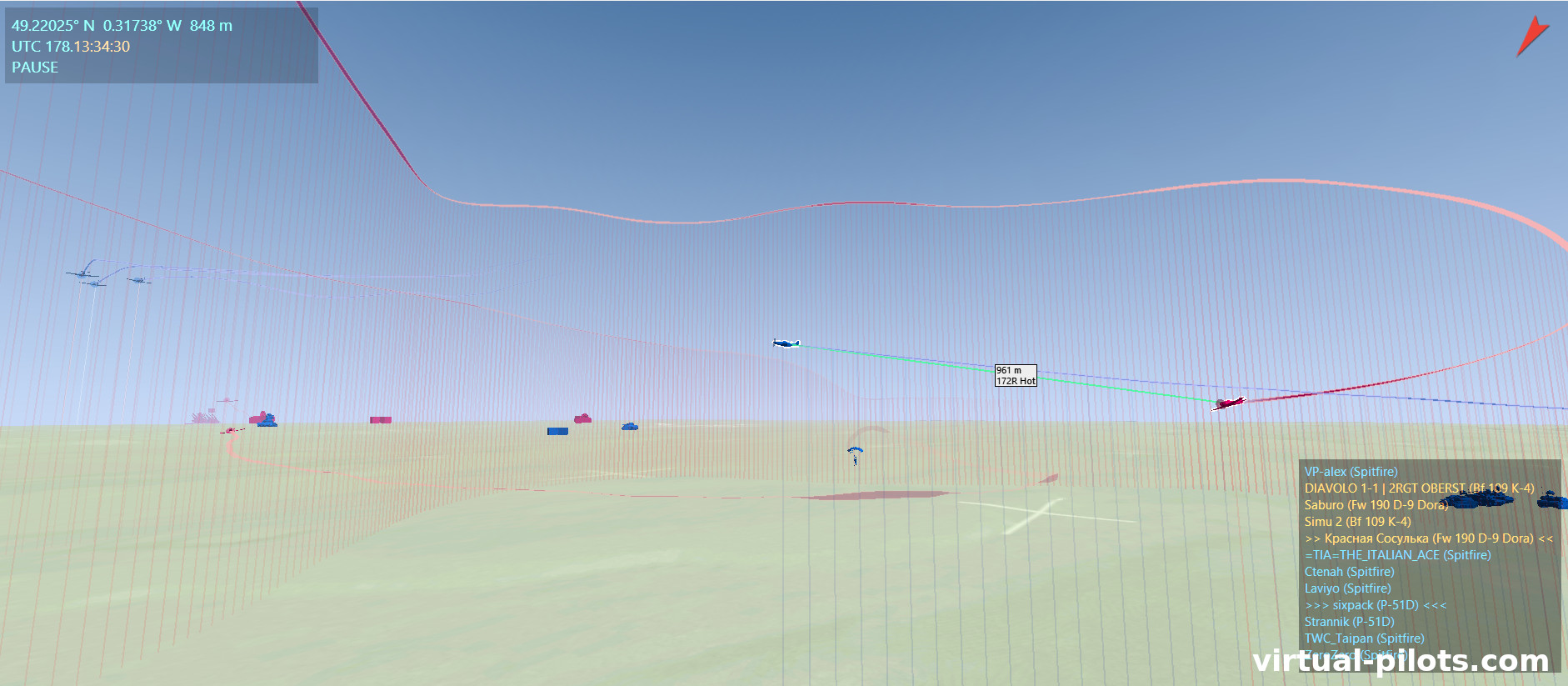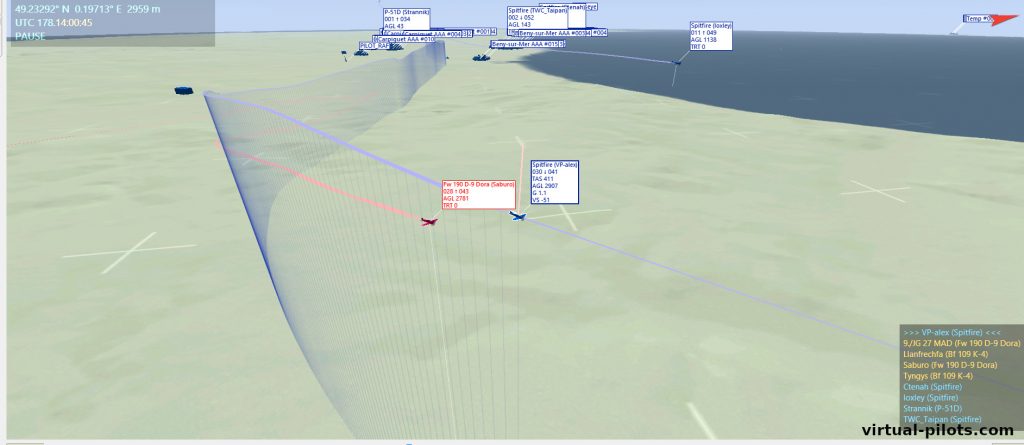This article “DCS how to survive” is a continuation of a previous publication: DCS WWII Dogfight: Drama in five acts. We recommend that you read the previous publication including its comments to understand the current document.
The results of the previous flight by the group were, generally speaking, not satisfactory. For this reason that flight was analysed in detail and we developed the following recommendations for allied pilots:
1. Checking your six!
Check, check and check your six each 15-20 seconds! Most kills of Spitfires and Mustangs were registered from behind. You should monitor not only the same level, but also “upper six” and “lower six” by looking and slightly manoeuvring. This tactic will undermine 90% or more of axis’ fighters attacks and your survival rate will increase immediately.

Look at another example.

2. In the combat zone don’t fly very straight more than 20 sec!
You can make S-turning to maintain the course every 15-20 sec. It will allow to check your “lower six” and it will more difficult to have an aiming fire for an enemy. Deviation or angle of the S-turn should be enough to check your “lower six”
3. Don’t fly alone!
In simulators like DCS, world classic formations, such as the four finger formation used in WWII can be too large and complicated. We can use this formation only for reaching the combat area. Best formations are the loose line formation or the loose echelon formation. The line formation is the best for monitoring each others six (incl. “upper and lower six”). The echelon formation provides a better way of following the leader, but it is difficult for the leader to control the wingmen. Each formation has its pros and cons. For attacking and/or manoeuvring the echelon formation is better and for safe patrolling the line formation is the best option.
4. Communication and interaction!
You must know where your comrade is every second. If you lose each other, immediately try to locate one another. A rendezvous or rally-point should be assigned over easily recognisable objects (bays, towns, airfields etc). Don’t forget to arrange altitudes in advance.
If you are going to do a manoeuvre: turning, changing altitude, changing course; consider that your partner cannot read your mind. He will lose you more easily if he doesn’t expect your manoeuvre. Warn him about what you are going to do then wait for his confirmation. No confirmation = he didn’t hear you = repeat it again.
5. Altitude.
Consider an altitude before entering a dogfight or before close contact with an unknown plane. It is easier to say than do. We know that German fighters (Me-109 and Fw-190) have a better rate of climb. We should reduce the difference in altitude as little as possible before coming in contact with an unknown plane. It is important to keep enough speed when climbing. You need to start increasing altitude immediately after beginning an approach to a contact who has more altitude.
6. Gunnery practice.
Our analysis showed that we don’t have significant problems with the pilotage. We hit enemies a lot of the time, but it not enough to shoot them down. You can be an excellent pilot, but never hit an enemy. You can practice gunnery off line (instant actions).
REMEMBER:
Success = Good teamwork
Survival rate = monitoring your six and your comrade’s six
Let’s repeat again:
1. Check your six!
2. In the combat zone don’t fly very stright more than 20 sec!
3. Don’t fly alone!
4. Altitude!
5. Communication and interaction!
6. Gunnery practice.

Very good debrief and analysis, Alex, I agree with all points and would like to add one. never, ever, in a combat zone. fly for more than 15 seconds straight and level. (that is why at first I am hard to fly leader with,
because I am always looking around, and seem to fly erratic, usually I am S-turning, checking my 6).
Thanx for your notice. I will add this advice in the post. There is a scene from Battle for Britain film where a commander shouted via the radio something like, “… you’re killed! Never, ever fly stright!” I tried to find this scene in youtube to inscert it in the post.
Yes by turning,( s-turning but maintaining course ) you ruin the gunnery solution of the adversary, even if you don’t realize it at the moment it happens. the more “loose” formations, i.e. loose duce, echelon, spread four, work well for this